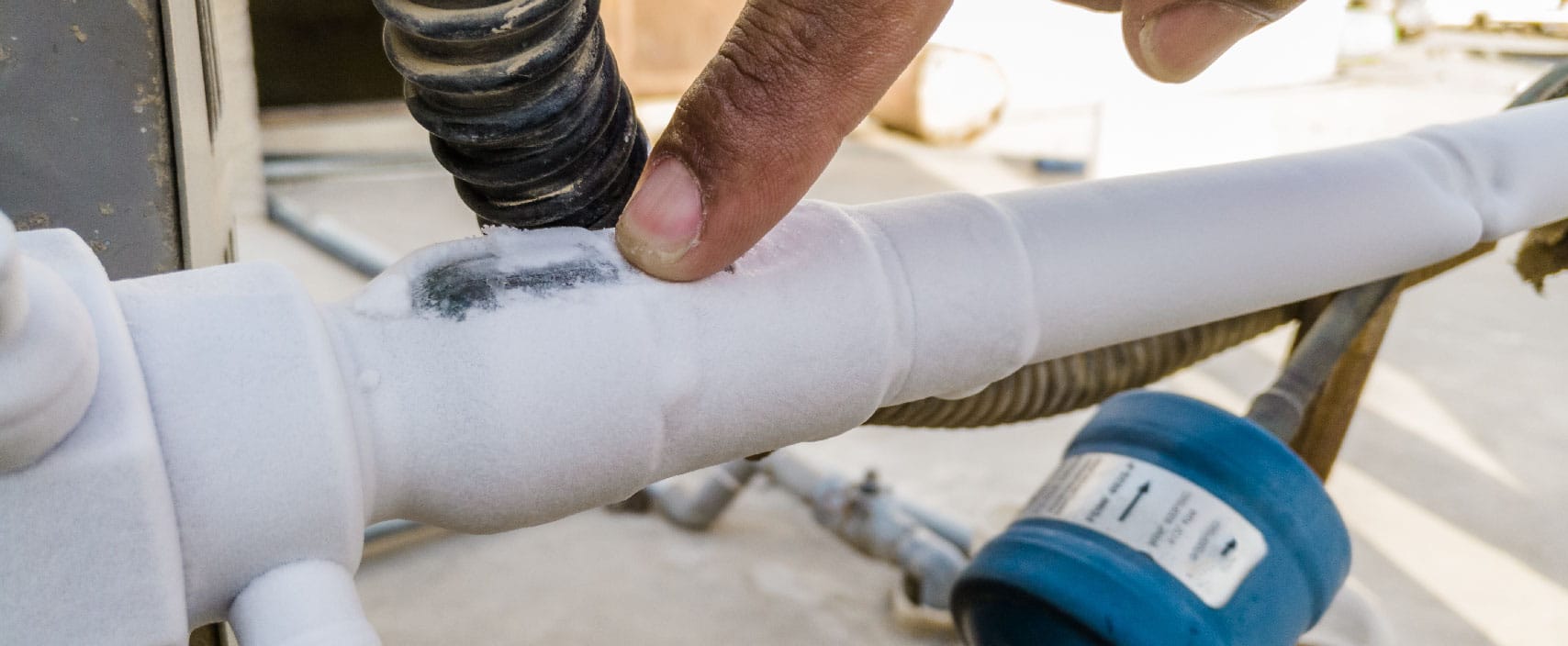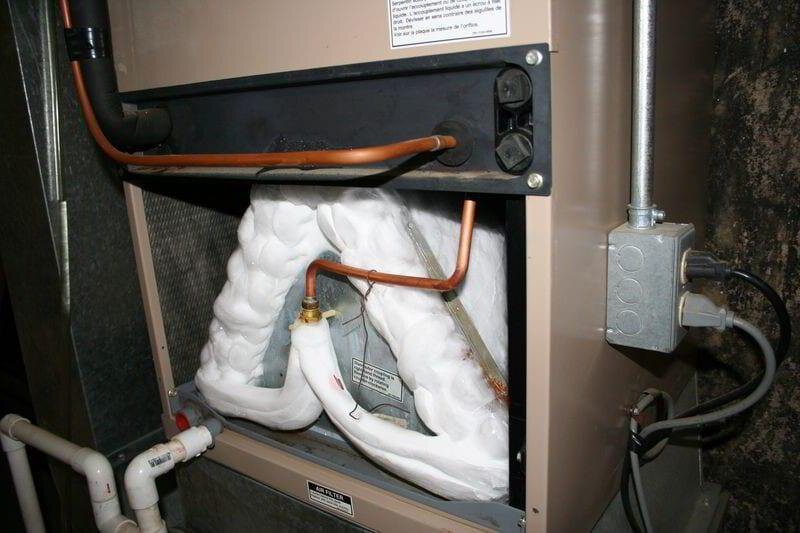What Should I Do If My AC Pipe Is Frozen? - Essential Tips for Restoring Functionality
What Should I Do If My AC Pipe Is Frozen? - Essential Tips for Restoring Functionality
Blog Article
Have you been on the lookout for critical info concerning What Do I Do If My AC Pipe Is Frozen?

Introduction
Discovering that your air conditioner pipe is frozen can be worrying, particularly during warm summer months when you rely upon your a/c unit the most. Recognizing what to do in such a circumstance is essential to avoid more damages to your cooling system and guarantee your convenience inside.
Recognizing the Causes
Numerous elements can add to the cold of an air conditioner pipeline. Comprehending these causes can aid you resolve the concern properly.
Lack of Airflow
One usual reason for an icy a/c pipeline is inadequate air flow. When the air movement over the evaporator coil is restricted, it can create the coil to go down below freezing temperature, causing ice development on the pipeline.
Reduced Refrigerant Levels
Insufficient cooling agent degrees in your AC system can likewise result in a frozen pipe. Reduced cooling agent degrees can cause the pressure in the system to drop, resulting in the cold of wetness on the evaporator coil.
Winter Conditions
In cooler climates, freezing temperatures outside can add to the cold of AC pipelines. If your air conditioner system is not correctly insulated or if there are leaks in the ductwork, cold air can infiltrate the system, causing the pipeline to ice up.
Dirty Air Filters
Filthy or blocked air filters can restrict air movement in your air conditioning system, leading to different issues, including an icy pipe. It's necessary to change or cleanse your air filters frequently to make certain proper air movement and stop ice build-up.
Indications of a Frozen Air Conditioning Pipe
Identifying the indicators of a frozen air conditioning pipeline is crucial for timely activity.
Decreased Airflow
If you notice a considerable reduction in air flow from your vents, it might suggest an icy pipeline.
Ice Buildup on the Pipe
Noticeable ice accumulation on the refrigerant line or the evaporator coil is a clear sign of a frozen air conditioning pipe.
Weird Sounds from the Unit
Uncommon sounds, such as hissing or bubbling, coming from your air conditioning device can signal that there's ice existing on the pipe.
Immediate Actions to Take
When confronted with an icy AC pipeline, it's necessary to act promptly to stop further damage to your cooling system.
Switching off the AC
The initial step is to turn off your a/c to avoid the system from running and exacerbating the issue.
Checking for Blockages
Examine the area around the indoor unit for any type of obstructions that may be blocking air movement, such as furnishings or drapes.
Defrosting the Pipe
You can make use of gentle techniques like putting towels taken in cozy water around the frozen pipeline to help thaw it gradually.
Preventive Measures
Taking safety nets can help avoid future occurrences of an icy air conditioning pipeline.
When DIY Methods Fail
If your attempts to thaw the pipe or address other problems are not successful, it's time to call in a professional.
Significance of Hiring a Professional HVAC Technician
A certified HVAC technician has the expertise and devices needed to detect and repair issues with your air conditioner system securely and successfully.
Normal Maintenance Checks
Set up regular maintenance consult a professional HVAC specialist to make sure that your air conditioning system is running successfully.
Changing Air Filters
Routinely change or cleanse your air filters to stop air movement restrictions and maintain optimal performance.
Insulating Exposed Pipes
If your air conditioning pipes are subjected to chilly temperatures, think about insulating them to stop cold throughout winter season.
Seeking Professional Help
If DIY methods fail to fix the issue or if you're unsure concerning exactly how to proceed, it's best to look for assistance from a qualified HVAC professional.
Verdict
Managing an icy AC pipe can be an irritating experience, but understanding how to respond can assist minimize damage and recover comfort to your home. By recognizing the reasons, acknowledging the signs, and taking punctual action, you can efficiently resolve the problem and prevent future incidents.
Frozen AC Line: Why It Happens & What To Do About It
A frozen AC line can be a rather peculiar sight in a place like Phoenix, Arizona where nothing ever freezes. In this post, we’ll discuss what makes an air conditioner line frozen – and what you can do about it.
Dirty Air Filters
Did you know that you should be cleaning or replacing your air filters on a monthly basis? Failing to do this can result in airflow issues that, in turn, cause your evaporator coils and lines to freeze over. You’ll notice a buildup of ice on both components, although the buildup on your pipes will, of course, be more evident unless you open your air condition up to reveal the coils.
What To Do About It
Give your air filter a good cleaning if it’s reusable. If not, replace the filter outright. Next, switch your air conditioner’s fan setting on and leave it there for 2-3 hours. This will draw warm air in, helping to thaw your evaporator coil. You can also check out this article for some tips on cleaning the coils themselves if you’d like to speed the process up. Before you switch the unit back to its normal state, make sure the supply vents are completely unobstructed and free of dust or other debris.
If you keep having this issue even after replacing your filters regularly, contact a local HVAC repair company and have them inspect your evaporator coil, ductwork, and any other components that may be at fault. If you live in the Phoenix, Arizona area, give American Home Water and Air a call.
Low Refrigerant Levels/Leakage
What To Do About It
Contrary to what air conditioner “recharge” companies often tell their clients about refrigerant, it should never need to be simply refilled. You see, refrigerant runs in what experts refer to as a “closed loop.” Refrigerant really shouldn’t be leaving that loop. If it is, you’ve got a leak.
Paying someone to come and pump more refrigerant into your system (aka “recharge” it) isn’t the solution. Doing that will simply kick the can down the road. Besides, refrigerant leaks can be harmful to the environment and people in your home.
Rather, you need to take care of the leak with the help of a technician. Check out this article for some more information about dealing with air conditioners that are leaking refrigerant. Before you contact a technician, switch your thermostat to the off position. Then, switch the fan setting on and let it run for 2-3 hours so the unit can thaw.
Improper Temperature Setting
Improper temperature settings can also cause a drop in your air conditioner’s pressure. What many people don’t realize is that air conditioners are actually designed to run when temperatures have fallen above roughly 60 degrees Fahrenheit. If you run the unit when it’s cold outside, you’ll run into many issues, including frozen components.

Hopefully you enjoyed reading our article about Have a Frozen AC Line? Here’s How to Fix It. Thanks for finding the time to read our blog post. Sharing is good. You won't know, you will be helping someone out. We treasure reading our article about Why Is Ice On My Outside Air Conditione.
Go Deal Now Report this page